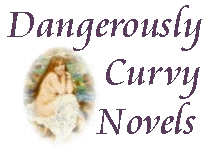Does your manuscript need an overhaul? Click here for an evaluation.
|
||||||||||||||||||||||||||||||||||||||||||||||||||||||||||||||||||||||||||||||||||||||||||||||||||||||||||||||||||||||||||||||||||||||||||||
|
~Romance 101~ What is the Romance Genre? Part 3 |
|
Erotica focuses graphically upon the sexual component of the story, often features alternative sex scenes, and may make use of language not found in regular romance novels. Romantica pays more attention to the emotional factors in the story, but still contains the other elements which make up erotica. Prime examples of contemporaries with a risqué bent are Marilyn Lee's titles "The Fall of Troy" and "Full-Bodied Charmer", Emma Holly's "Personal Assets" and “Top of Her Game”, and Lori Foster's "Too Much Temptation". For historical erotic novels, look into Robin Schone's "Awaken, My Love", "The Lady's Tutor", and "The Lover". (Even though it sold as an historical romance, Lisa Kleypas' novel "Suddenly You" teetered on the edge of romantica because its sex scenes were highly erotic and included activities not often seen in a mainstream romance.) Futuristics are exactly what the name implies; the time period of the book is set in the future, and the setting of the story may or may not be the known universe. Some people consider this subgenre to be romance’s answer to science fiction. Try reading Catherine Asaro's "Ascendant Sun" to experience this type of novel. Also try Katherine Greyle's "Oracle", which has elements of fantasy, time-travel, and a futuristic setting. Fantasies are novels which are set in worlds different from our own and may be almost faerie-tale-like in their feel, much like mainstream fantasy novels, but with a greater emphasis placed upon the relationship between the hero and heroine. “Magick” by Mary Taffs is a novel which takes place here on Earth, but which has elements of magic and occultism in it. Gothics can take place in any time, but are generally associated with the 18th and 19th centuries. They are spooky and eerie psychological thrillers, but do not necessarily have supernatural components. The heroine is invariably in fear for her life, and frequently thinks she is going mad. Try reading "Devil Wind" by Catherine Blair or Beverly C. Warren's "Lost Wives of Dunwick", "Sapphire Legacy", and "Bride of Hatfield Castle", and Daphne Du Maurier's "Rebecca". Time-travels may involve either one or both members of the couple being somehow thrust forward or backward into time. Judi McCoy specializes in time-travels as well as in Paranormals, which have a hint of magic, ghosts, or some other supernatural piece to them. Look for her novels "Heaven in Your Eyes", "I Dream of You", "Say You're Mine", and "You're The One". Also try Karen Fox's "Prince of Charming", Anne Stuart's "Night of the Phantom", Diana Gabaldon's "Outlander" and Barbara Bretton's "Somewhere in Time". Multi-cultural/Ethnic romances feature characters who are African-American, Latino, Asian, Native American, and so forth. Suggested reading for this category: Candice Poarch's "Tender Escape", Evelyn Palfrey's "Dangerous Dilemmas", and Raynetta Manees' "Fantasy". Glitz novels focus on the life of the high-flying jet-set. These are the longer sagas such as those by Jackie Collins or Judith Krantz, who wrote "Lovers". Finally, there is a broad category called Inspirational which can encompass any time period or setting. These stories mainly focus on the spiritual growth of the main character(s). They are generally, but not always, Christian novels. For a contemporary setting Christian novel, try Gail Gaymer Martin's "Dreaming of Castles", Ruth Scofield's "In God's Own Time", and Cheryl Wolverton's "For Love of Hawk". For an historical setting Christian novel, try "The Bluebird and the Sparrow" by Janette Oke and "The Knight and the Dove" by Lori Wick. Back to Part One: What is Romantic Fiction? Back to Part Two: Subgenres of Romantic Fiction
Sources used: “How to Write Romances” by Phyllis Taylor Pianka, “How to Write a Romance and Get It Published” by Kathryn Falk
|

